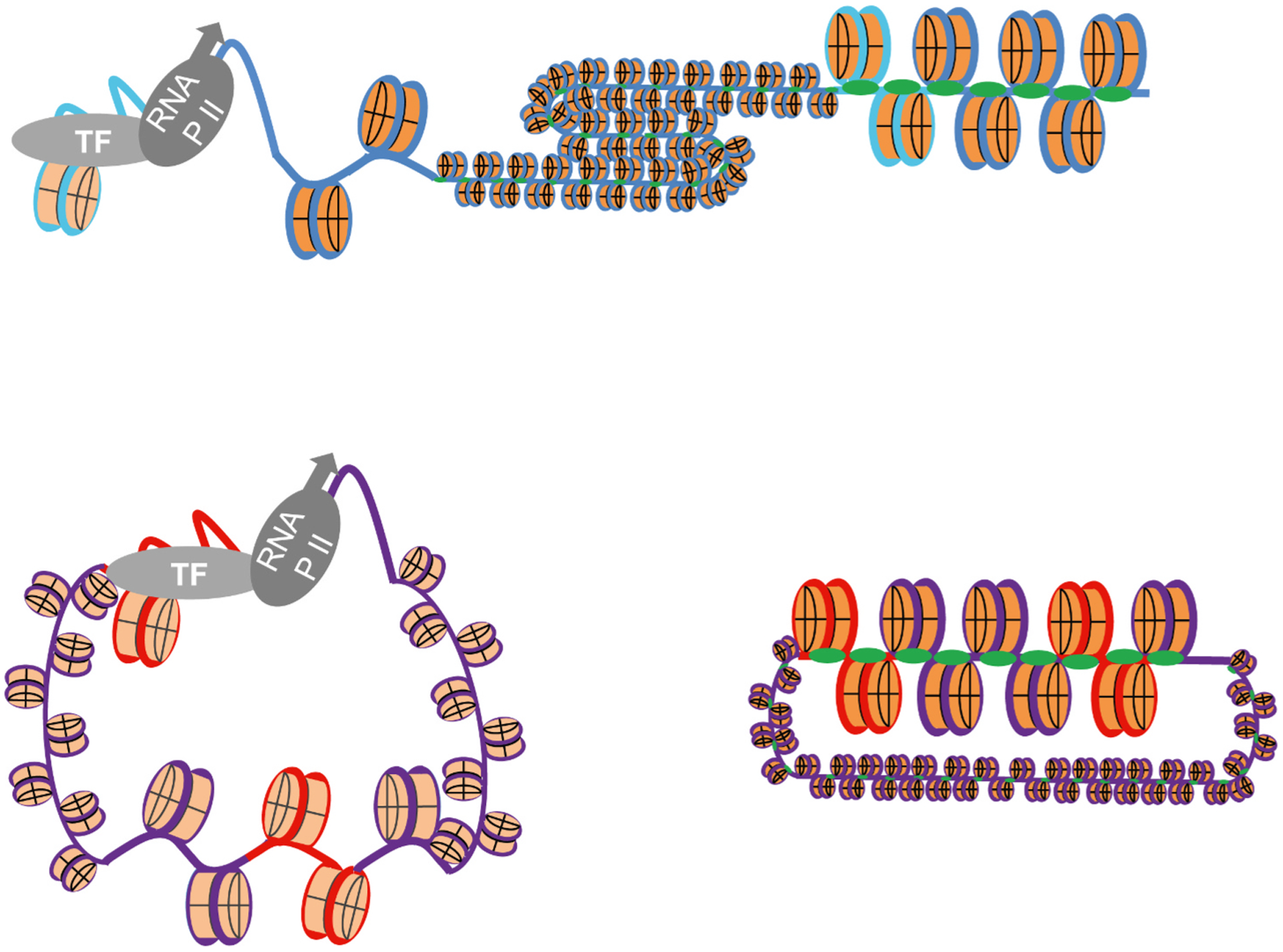Fig. 8.

Chromatin dynamics mediated regulation of cellular or viral transcription. Epigenetic regulation of a specific cellular gene with PTM characteristic of active transcription increases its accessibility to transcription proteins and therefore activates transcription, whereas another gene in the same chromosome remains tightly chromatinized with PTM characteristic of repression and transcriptionally inactive (top). Epigenetic regulation of HSV-1 genomes, in contrast, dictates the accessibility to entire genomes (bottom). HSV-1 genomes in dynamic and accessible chromatin, enriched in PTM associated with transcription, are accessible to transcription proteins and therefore transcriptionally competent although only the gene on top is actually transcribed at this time (left). HSV-1 genomes in less dynamic or accessible chromatin, enriched in PTM characteristic of silencing, are not accessible to transcription proteins and therefore the entire genomes are transcriptionally incompetent (right). Blue line, cellular DNA; Purple line, viral DNA; light blue line, cellular promoters; red line, viral promoters.
